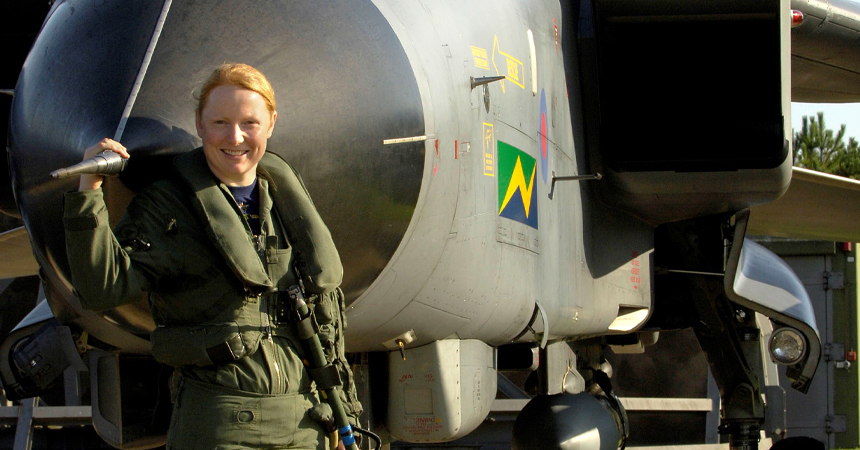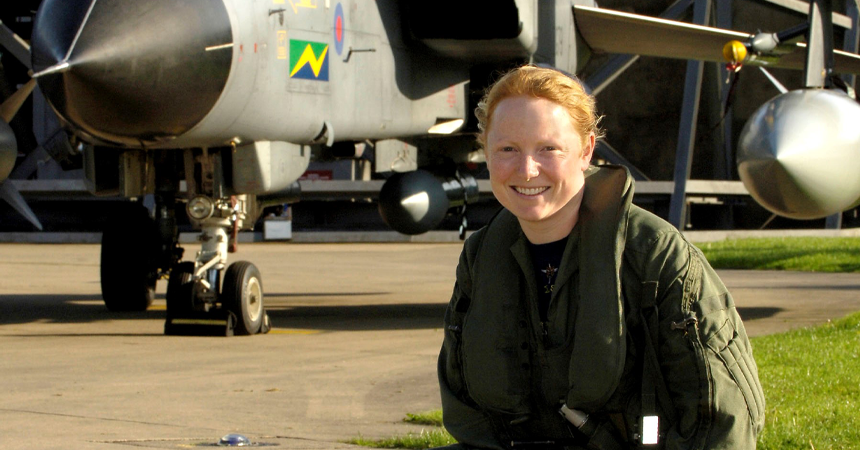
Az első nő a Red Arrows-ban
Kirsty Murphy – First Female Red Arrow – Women’s History in Aviation – My Airfix Story
Airfix is proud to highlight some key contributions of women throughout history, as part of an exciting campaign celebrating Women’s History Month, March 2023.
As part of this campaign, aimed to inspire young people, especially young women to strive for their dreams, we throw a spotlight on women in aviation. Over the course of the month, we will speak with some aviation icons and share key dates and accomplishments of women who changed the face of the aviation industry forever.
In an exclusive interview with Airfix, Kirsty Murphy MBE, the first female Red Arrows pilot, described the pressure of gaining this title when she was first accepted onto the team.

From the front line to the display line
From flying the Tornado GR4 on the front line to then performing in front of thousands of people on the display line, a day-to-day job had changed significantly for Kirsty. She reflects on the time that she was accepted to the Red Arrows, which is one of the toughest selection processes, only accepting the best of the best, all whilst becoming the first ever female Red Arrow pilot in the history of the RAF, still to this very day.
Recalling her acceptance on the team, Kirsty said: “I remember it vividly. I was on 13 Squadron, flying [Tornado] GR4, there is a gap between coming home from the selection week and finding out the results, I remember it felt like months, but it was probably only a couple of weeks.
I knew I was close to finding out as myself and another pilot on the squadron had applied for the role. The boss asked to see us both and he called the other pilot in first.
I was sat there in the office waiting for their conversation to end. The other pilot came out the Boss’s office and just walked past me and said, ‘it’s your turn. There was no emotion on his face. So, I had no idea if he got in or not, which in hindsight probably meant he hadn’t.”
‘It’s keeping the hairs standing on the back of my neck just thinking about it.’
She added: “I walked in and I honestly, I thought there’s no way I got in! I was expecting my first application to be almost like putting the marker in the sand and showing my interest in the team.
I was trying to get people to know my name and face, and then I had thought that I’d apply again, the next year, as I felt quite inexperienced in some ways in my application, not because of my flying abilities, but in terms of my experience in Red Arrow applications.
Lots of candidates apply two or three times. Many people on the short list, had applied before, so they knew what to expect and they seemed so much more confident about the whole process than I was.
One of the other pilots shortlisted and I thought we were never going to get in, that the other applicants really ‘know what they’re doing’, so let’s just enjoy it.’
In a turn of what seemed like fate, Kirsty explained how the office she learned of her acceptance was the very same office she first met her dad in when he came back from Gulf War 1, when he had been shot down and captured as a Prisoner of War.
“I walked into the very same office, and it was a hugely emotional experience”, she said, adding: “to have those two experiences in the same office was really overwhelming.
After I found out that I got accepted, I phoned my dad straight away and said, ‘My God, dad, I got into the Red Arrows!’ and he just howled down the phone with excitement and praise; it was an incredible moment. It makes the hairs stand on the back of my neck just thinking about it.”
Kirsty’s aviation career is one that inspires thousands, born of what she refers to as a ‘seed of an idea’ that grew as she did, but where did this ambition begin?
Kirsty explained how she first discovered her love for modelling after being introduced to the hobby by her dad, who also served in the RAF as an aircraft navigator.
‘Airfix models allowed me to feed my ambition.’
“I remember my dad building the Airfix Vulcan, seeing all the plastic pieces scattered across the table and progressively piecing it all together. I naturally picked up on the modelling skills, and like with many others, my first Airfix kit was a Spitfire and later was the Avro Lancaster, which were both hung from my bedroom ceiling.”
Kirsty spoke about how Airfix helped spark her interest in aviation at the age of 12. She said: ‘I remember what it feels like to finish those Airfix model kits at a time when I was longing for a life as a pilot. I kept that [longing] alive by looking at the Airfix models I had made. It’s a very special thing you can do with your family, and I have such strong memories of building them with my dad.
She shares the same passion for modelling with her son, as she explains: “I have been doing a bit of modelling with my 7-year-old. We introduced him to Airfix kits, and I’ve had a go with him. It’s very tempting to complete the kit myself, to keep taking control of him and making sure he is doing it properly, which is not obviously the idea! So, I have learnt to sit on my hands whilst he models.”
She added: “My husband (Ben Murphy, who was also on the Red Arrows team), and I were gifted bespoke Red Arrows Hawk models each year we served on the Red Arrows. So, Ben and I both have one each which we display on the living room shelf.
My son then built his Airfix Quickbuild Red Arrow and said, ‘Mum, can I put my Red Arrow next to yours?’ So, we have this little model from our son in the middle of ours, which is quite sweet.”

Reflecting on becoming the first female Red Arrow pilot
Kirsty faced many hurdles during her career, especially, as she describes, ‘standing out’ to others for being the only female within her Squadron at the time.
‘I don’t want to be the first female in the Red Arrows. I just want to be a Red Arrows pilot.’
“I was very conscious that there hadn’t been any females on the team at that point. I did speak to a couple of the female pilots who were slightly ahead of me in the system and asked why they hadn’t applied. One responded that it was simply a matter or not wanting to be the first female on the Red Arrows; that the pressure would change the experience. I understood that because I didn’t want to be the first female in the Red Arrows, I just want to be a Red Arrows pilot. Two separate things.
I decided I just couldn’t let that be the thing that stopped me from applying. It didn’t feel like a strong enough reason to not apply. So, I did it apply and never looked back.”
Innovation within aviation
After a long-loved career with flying, Kirsty is now on a slightly different career path, one with a great application to modern minds, focussing on helping the environment with innovation in aviation.
“I wanted a slight change of role to broaden my horizons. I now work for the Connected Places Catapult and we’re the innovation accelerator for transport and places.
We effectively run lots of different projects which put together academics and startups, small and medium enterprises and link them together with industry. Academics or innovators alike can have the chance of the maturing their unique ideas, helping them to the marketplace, all linked to the decarbonisation of aviation.”
Kirsty summarised: “Everything else that I flew before in my career, whether it be in the Red Arrows or the Blades Aerobatic team, was designed in the 90s or 60s; not great for the environment at all.
Now I’m looking at the future: things like eVTOL and at hydrogen aircraft. It’s exciting to be looking at the future of aviation and its reduced impact on the environment.”